It was a pleasure and delight to finally be able to share A to Z of Caribbean Art with some of the book’s contributing writers and artists, as well as friends and supporters, at the Trinidad launch of A to Z on October 31st, 2019.
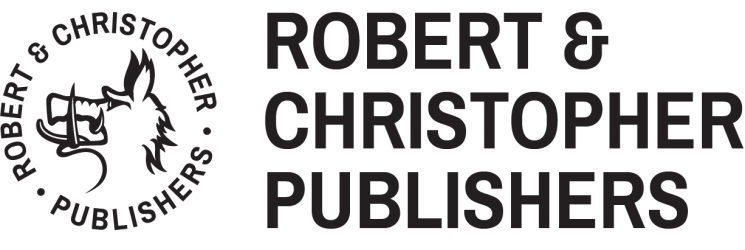
Robert & Christopher Publishers
Caribbean Art Books
It was a pleasure and delight to finally be able to share A to Z of Caribbean Art with some of the book’s contributing writers and artists, as well as friends and supporters, at the Trinidad launch of A to Z on October 31st, 2019.
Work continues apace on the A to Z, and we’re happy to introduce our two writers from Jamaica: Monique Barnett-Davidson and Nicole Smythe-Johnson. Barnett-Davidson has worked in various aspects of the visual arts in Jamaica including art education, exhibition programming and development, as well as art museum education and research. She is currently the Assistant Curator in Education at the National Gallery of Jamaica. Smythe-Johnson is a writer and independent curator based in Kingston. She has written for several local and international publications. Most recently, she was Assistant Curator on Neither Day Nor Night (2017) an exhibition of the work of John Dunkley at the Perez Art Museum in Miami. She is currently Editor of Caribbean Quarterly, the University of the West Indies’ flagship journal.
Our recently concluded crowdfunding campaign for A to Z of Caribbean Art has been a great success and brought us a tremendous boost as we move forward with work on the book.
Thank you so much to everyone who backed our campaign or shared our links or encouraged others to support. We really couldn’t have done it without you!
See Me Here is reviewed by Nicole Smythe-Johnson in the September 2016 issue of The Caribbean Review of Books.
“I recommend regarding the volumes in this series as exhibitions, rather than as books. Yes, they function as books: they are portable documents of artwork of a certain type, from a certain region, in a certain time. However, they also make deliberate use of the logic of the art exhibition — the establishment of visual relationships, a focus on placement and space, etc. The series makes an argument — not as a literary text does, but as a visual one does. In this way, they are truly successful art-books, fusing the two media in the best possible way. To own a copy, then, is to have a portable exhibition, open for viewing the moment you part the pages.” Read the full review here…
On Thursday 26 June we launched our latest publication, See Me Here: A Survey of Contemporary Self-Portraits from the Caribbean, in Barbados as part of Fresh Milk XVI.
This event featured a small exhibition of the work of the four Bajan artists in the book – Ewan Atkinson, Annalee Davis, Joscelyn Gardner and Sheena Rose – all of whom were present for a spirited panel discussion on their work and the definition of self within a Caribbean context. R&C’s co-editor, Melanie Archer, also sat in on the panel, which was moderated by Barbadian artist, Russell Watson.
After the discussion, Fresh Milk’s Katherine Kennedy wrote an insightful review of the book that can be found here.
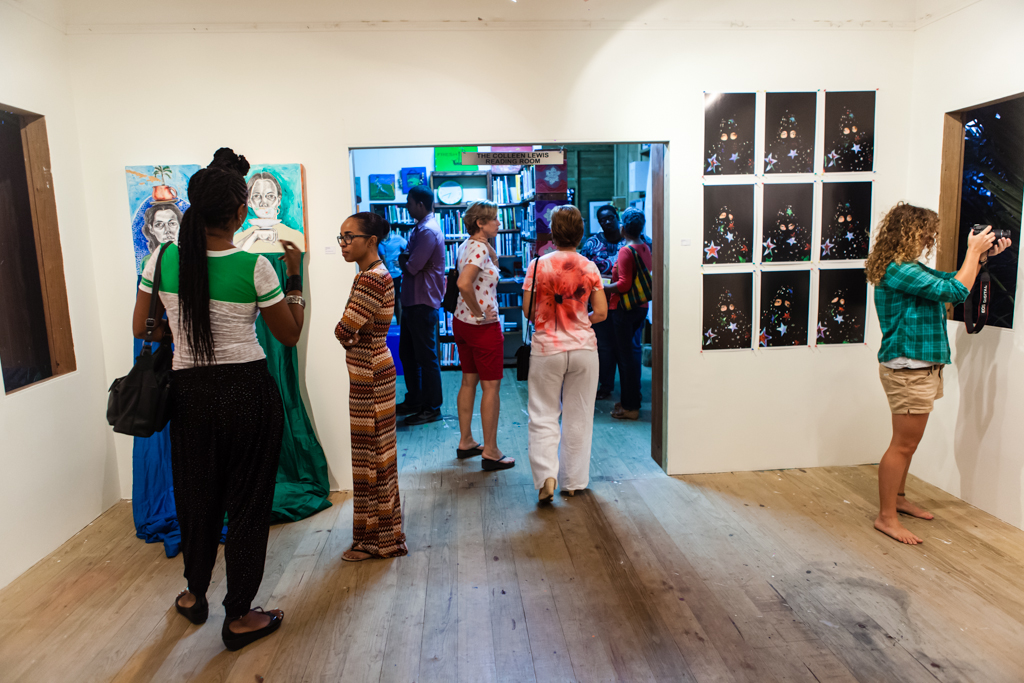
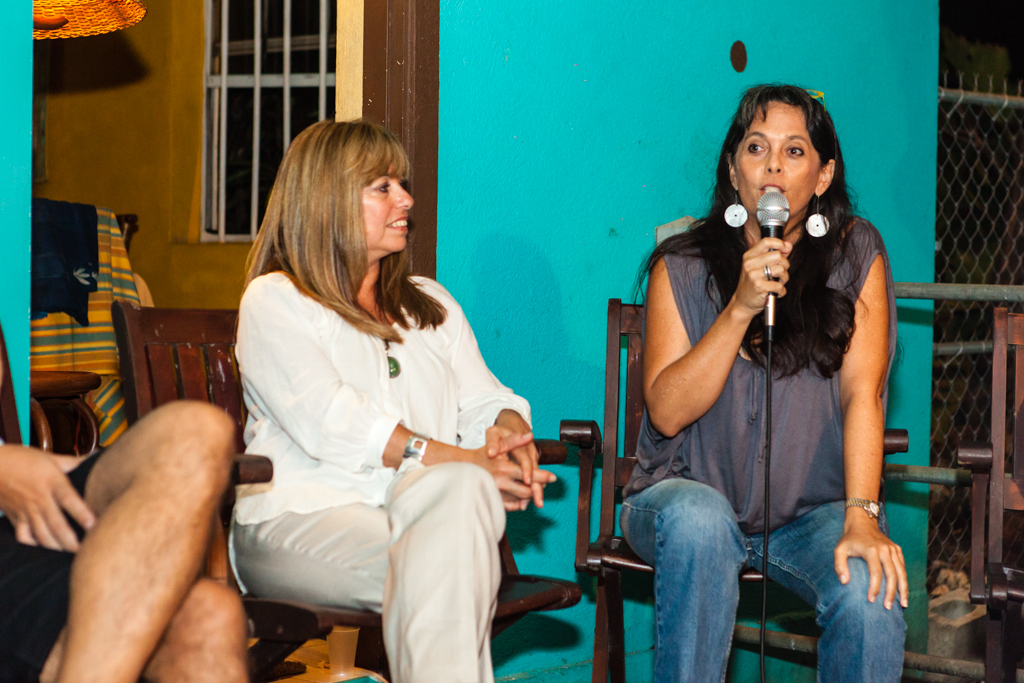
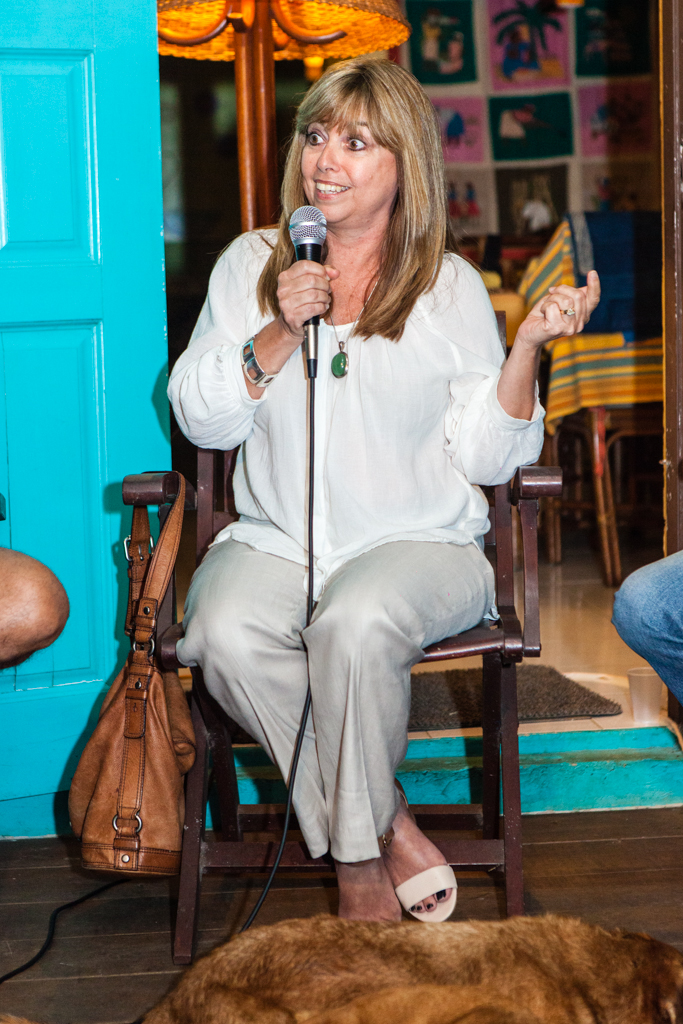
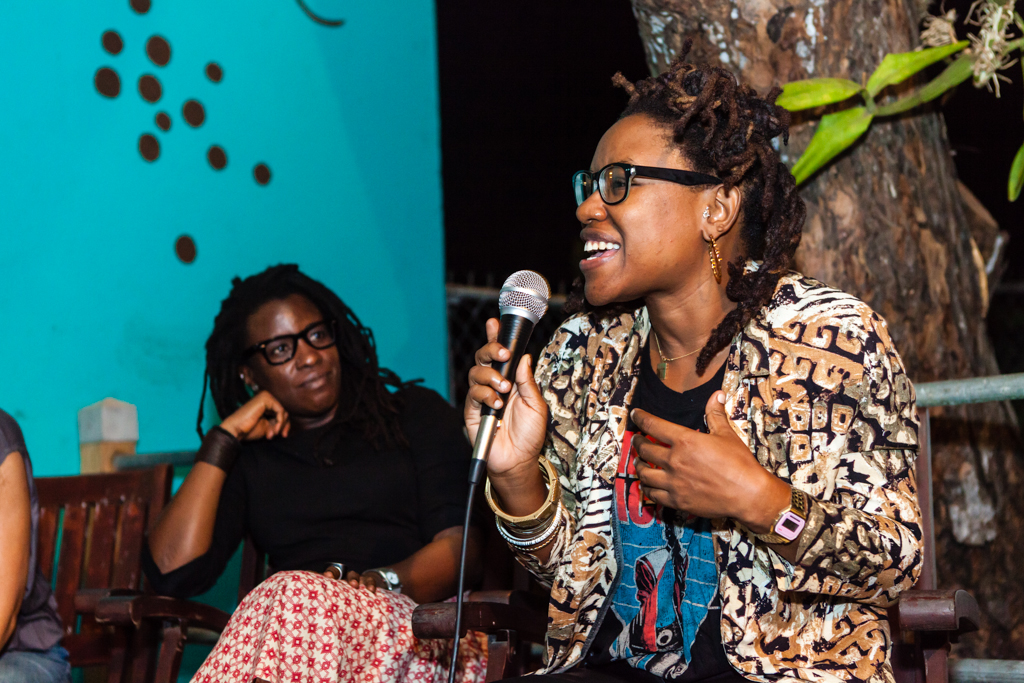
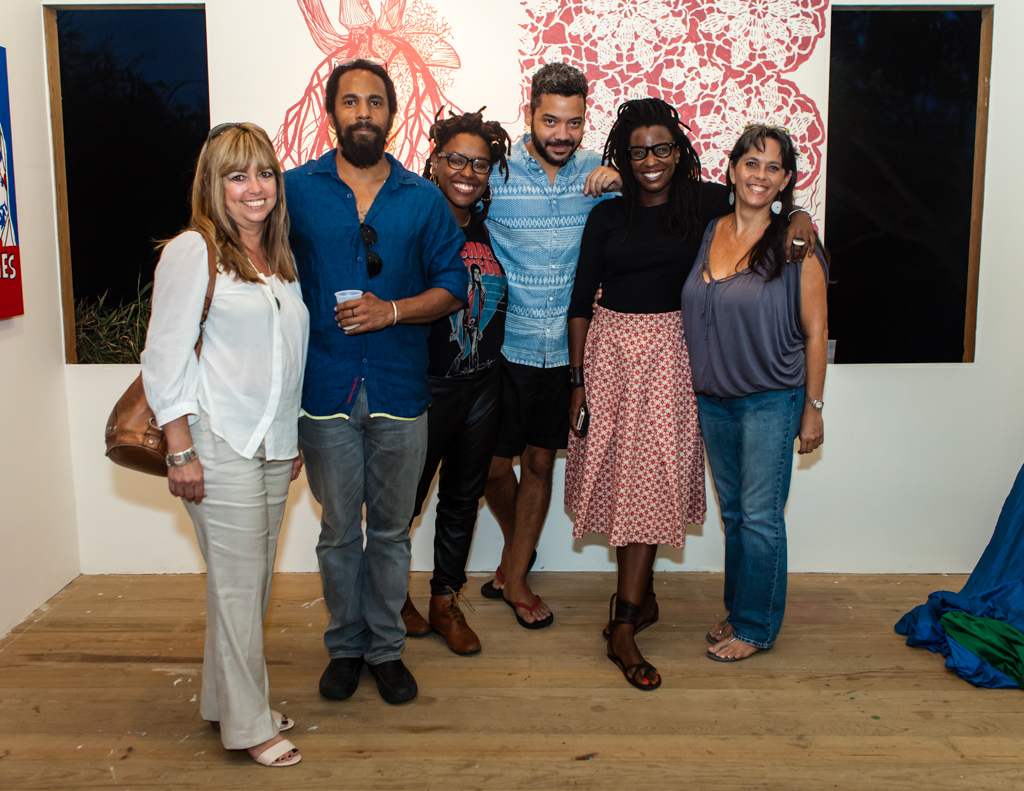
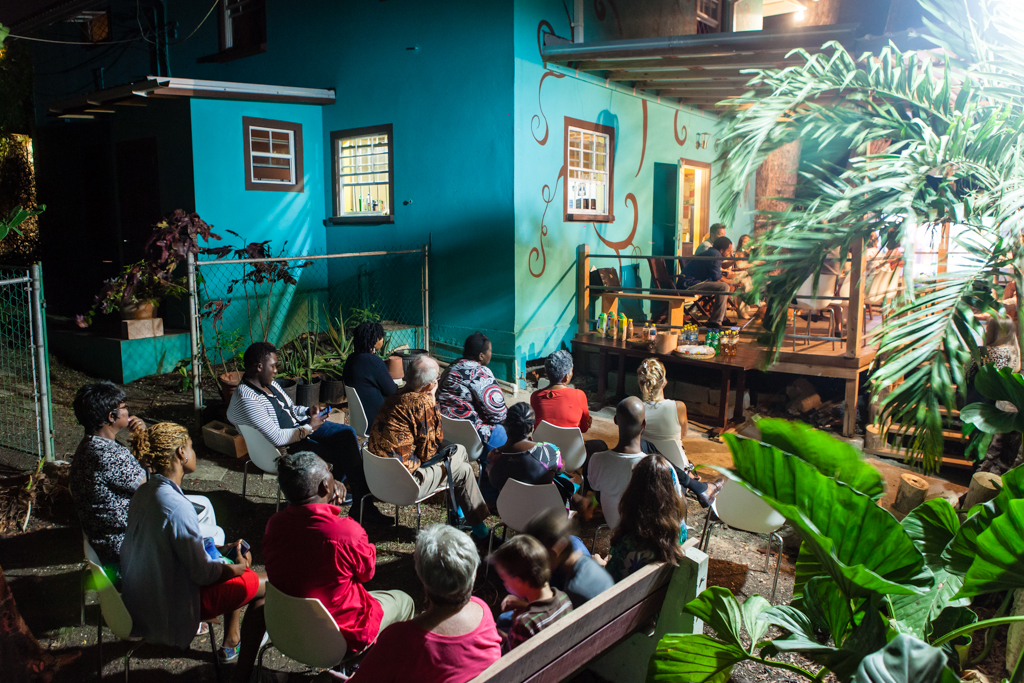
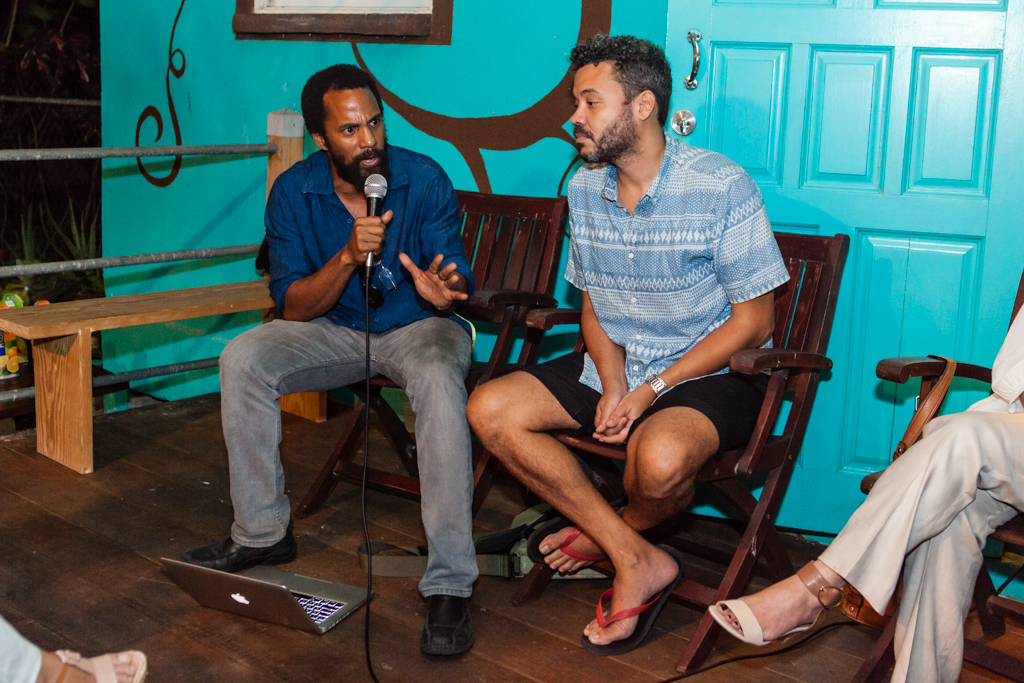

On April 24th, 2014, Robert & Christopher’s latest art book, See Me Here: A Survey of Contemporary Self-Portraits from the Caribbean was launched at Medulla Art Gallery in Trinidad, as part of the Bocas Lit Fest.
See Me Here brings together the work of 26 contemporary artists from around the English-speaking Caribbean and its Diaspora.
Our next launch is planned for June 26th at Fresh Milk in Barbados.
In Trinidad and Tobago, books are available at the Paperbased Bookstore in the Hotel Normandie.

We are so excited to be able to share the front cover of our new title, See Me Here: A Survey of Contemporary Self-Portraits from the Caribbean with you! The cover features a piece by Barbadian artist, Sheena Rose, called Clown or What, from Rose’s “Sweet Gossip” series. Sheena is one of 25 artists from around the English-speaking Caribbean whose work will be featured in See Me Here.
The artists included in the book are:
Akuzuru
Ashraph
Ewan Atkinson
James Cooper
John Cox
Renee Cox
Annalee Davis
Susan Dayal
Laura Facey
Joscelyn Gardner
Lawrence Graham-Brown
Anna Ruth Henriques
Nadia Huggins
Michelle Isava
O’Neil Lawrence
Jaime Lee Loy
Che Lovelace
Joshua Lue Chee Kong
Olivia McGilchrist
Steve Ouditt
Sheena Rose
Irénée Shaw
Roberta Stoddart
Stacey Tyrell
Dave Williams
The essay, “Picturing Self”, was written by Marsha Pearce.
See Me Here will be launched in Trinidad and Tobago during the Bocas Lit Fest, April 24th at Medulla Art Gallery, Woodbrook.
See Me Here is published by Robert & Christopher Publishers, edited by Melanie Archer and Mariel Brown, and designed by Richard Mark Rawlins.

Robert & Christopher publishers is delighted to announce the upcoming release of our latest title, See Me Here: A Survey of Contemporary Self-Portraits from the Caribbean.
The The Trinidad and Tobago launch will take place in partnership with the Bocas Lit Fest and Medulla Art Gallery, April 24th, 2014.
In Jamaican patois, the expression, “See Me Here” (See Mi ‘Ere!) is an instruction used to call attention to the speaker – whether for his or her physical appearance, or to note the occurrence of a significant moment in that person’s life – an arrival, so to speak. In a similar way, the book, See Me Here: A Survey of Contemporary Self-Portraits from the Caribbean, calls attention to recent directions in self-portraiture throughout the region, by focusing on artists who frequently or significantly use their physical selves, or those to whom they are linked by blood or significant experience, as an avenue for exploration and expression. In so doing, the book asks: How do we really see ourselves? How accurate is the image we present? What formative roles do our cultures and upbringings play? And, what role does the Caribbean as a physical and mental space have in the creation and perception of our own personal, visual identities?
One of the most common understandings of the self-portrait is that it reveals something of an artist’s inner feelings or personality. While this is one focus of See Me Here, the book also examines how, by using their own likenesses, certain artists are speaking to potentially complex, multilayered matters – identity, history, race, gender, sexuality, politics – thus defining themselves within their given contexts and through vastly varied experiences.
Although See Me Here presents individually distinct projects, the works are inevitably interconnected through similar themes. By dealing with self as a starting and/or ending point, the book covers a broad range of media and representations that the artists here explore in order to question and articulate what defines them within a contemporary Caribbean existence.
Reviewed by Leanne Haynes for ARC Magazine; 23rd April 2013
This superb visual treat, with exceptional design was published by Robert and Christopher Publishers of Trinidad and Tobago in 2012, under the editorial guidance of Melanie Archer and Mariel Brown. Pictures from Paradise is the first edition in a planned series of works by the publishers and focuses specifically on the evolution of contemporary photography in the Anglophone Caribbean.
The collection contains an eclectic array of images, featuring names such as Marvin Bartley and O’Neil Lawrence of Jamaica, Rodell Warner and Abigail Hadeed of Trinidad and Tobago, and ARC Magazine’s very own Creative Director Nadia Huggins and Editor-in-Chief Holly Bynoe of St. Vincent and the Grenadines, to name but a few of the outstanding entries that make up Pictures from Paradise. The collection then consists of images from eighteen different artists, from seven different Caribbean countries. As such, the volume gives the viewer a range of perspectives on the region that go beyond the idyllic (and somewhat tired) representations of the Caribbean i.e. those that solely focus on that of the tourist view: the sea, the sand, and the palm trees. What Pictures from Paradise does so successfully is shatter that longstanding image of the region and present an alternative, one of real lives, real people, and real situations, in an ever changing landscape so fascinatingly complex, embellished with issues of race, history, and politics. As Editors Archer and Brown state in the foreword to the collection, ‘In recognising that the region is not the picture-perfect paradise of traditional depictions, these artists focus instead on what is not easily seen or that which is often ignored’ (4). Pictures from Paradise is therefore a platform, a visual staging of the alternative, an alternative seen by the photographer and in turn, us, the viewer.
Given all this, we might then question the title of the collection; in fact it was one of the first things that struck me about Pictures from Paradise. Indeed, in the introductory essay provided by Assistant Curator of the National Gallery of Jamaica, O’Neil Lawrence, and contributor to the volume, highlights the irony of the name, offering an explanation:
[…] the images reproduced in this book are not the constructed realities that have been perpetuated and exported with the goal of enticing the tourists to the shores of one of the countries that make up the Caribbean. Rather, they are images produced by the inhabitants of this constructed Paradise – not as invitations to indulge in the unreal but as statements about Caribbean life from within the experience (5).
Lawrence’s essay, ‘Beyond Constructed Realities’, is placed at the beginning of Pictures from Paradise and effectively provides the theoretical grounding for the format of the collection: offering the most amateur of photographers (or even non-photographers) the necessary knowledge to trace the development in the region’s photographic history and also recognise the main categories of images taken by Caribbean photographers, which are then consequently represented in the volume. These four sections are as follows: The Tableau Viviant, Portraiture, The Documentary Image and finally, Transformed Media and Lawrence’s text gives a detailed overview of each of these, mapping their origins and evolution. ‘Beyond Constructed Realities’ is a vital part of Pictures from Paradise, providing a necessary theoretical springboard to a predominantly visual collection. As such, it adds a narrative to the volume, allowing the reader to relate to the visual iconography of the proceeding images.
A particular strength of Pictures from Paradise is the amount of images by each photographer. The editors have resisted the urge to include as many photographers as possible and because of this the viewer is given a sense of each of the photographers’ own stories. Rather than presenting single images, the collection presents at least six images for most of the contributors. For example, the collection contains a series of underwater images by Bermuda-born James Cooper, in fact, it is his image Fishing Line #2 (2010) that provides the intriguing and equally inviting front cover. By including eight of Cooper’s underwater series, we can explore his varying use of colour and composition and as Lawrence states in the opening essay, the ‘enhanced and surreal nature’ of the images (8). This series, is precisely that, a series, and although each of Cooper’s images are singly embellished with meaning, they function as a whole, with interwoven narratives. Pictures from Paradise allows one to trace the experimentation of the each of the photographers’ work, which in turn adds to the panoramic depiction(s) of the Caribbean.
The photographs in Pictures from Paradise address a range of subjects including Renee Cox’s Redcoat (2004) and her contemporary representation of Nanny of the Maroons; Marvin Bartley’s photographic depictions of colonial exploitation in the Caribbean in Master and Slave (2011); Alex Smailes’ Haitian series, which documents what he refers to as ‘modern-day slave domestic labour’ and additionally, his Trinidadian shots, which place an emphasis on gang culture. Other forms include the Transformed Media work of Holly Bynoe, whose time-staking collecting of images results in a creative manipulation, which specifically interrogate themes of time and memory and Nadia Huggins’ use of iPhoneography (to use O’Neil Lawrence’s term), i.e. using iPhone applications to take images, conjure up narratives relevant to use all. This brief overview is illustrative of the sheer range in Pictures from Paradise, allowing one to map the varying landscape of photography in the region, woven together by a common thread: life in the Caribbean.

As part of our distribution deal with D.A.P., Pictures from Paradise will be available on amazon.com from the end of March. It’s not to soon to start placing your advance orders! Click here for more information. Happy ordering!